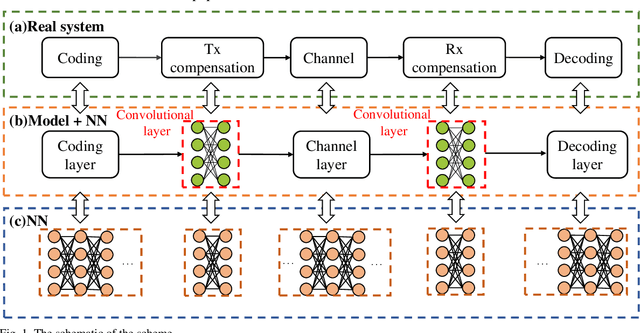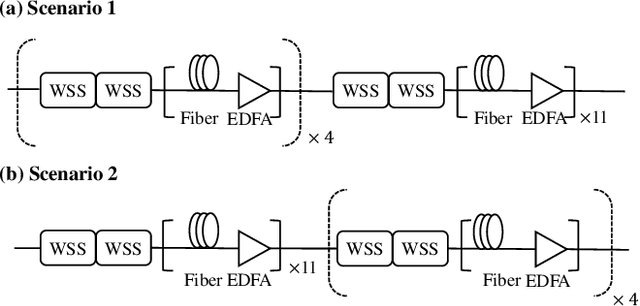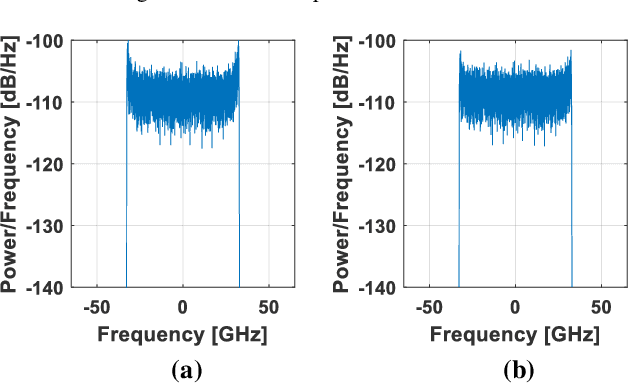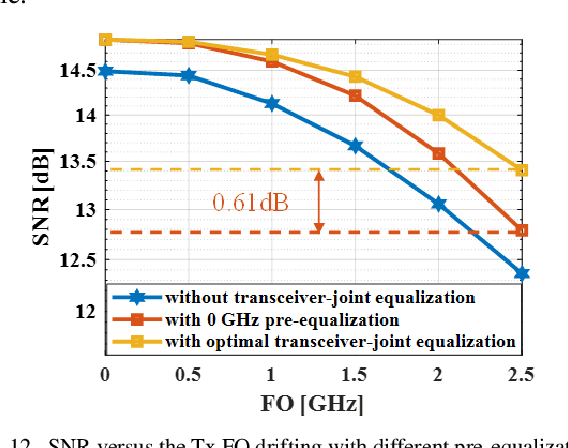Hexun Jiang
Preamble Design for Joint Frame Synchronization, Frequency Offset Estimation, and Channel Estimation in Upstream Burst-mode Detection of Coherent PONs
Sep 22, 2024Abstract:Coherent optics has demonstrated significant potential as a viable solution for achieving 100 Gb/s and higher speeds in single-wavelength passive optical networks (PON). However, upstream burst-mode coherent detection is a major challenge when adopting coherent optics in access networks. To accelerate digital signal processing (DSP) convergence with a minimal preamble length, we propose a novel burst-mode preamble design based on a constant amplitude zero auto-correlation sequence. This design facilitates comprehensive estimation of linear channel effects in the frequency domain, including polarization state rotation, differential group delay, chromatic dispersion, and polarization-dependent loss, providing overall system response information for channel equalization pre-convergence. Additionally, this preamble utilizes the same training unit to jointly achieve three key DSP functions: frame synchronization, frequency offset estimation, and channel estimation. This integration contributes to a significant reduction in the preamble length. The feasibility of the proposed preamble with a length of 272 symbols and corresponding DSP was experimentally verified in a 15 Gbaud coherent system using dual-polarization 16 quadrature amplitude modulation. The experimental results based on this scheme showed a superior performance of the convergence acceleration.
Multicarrier Modulation-Based Digital Radio-over-Fibre System Achieving Unequal Bit Protection with Over 10 dB SNR Gain
Jul 04, 2023


Abstract:We propose a multicarrier modulation-based digital radio-over-fibre system achieving unequal bit protection by bit and power allocation for subcarriers. A theoretical SNR gain of 16.1 dB is obtained in the AWGN channel and the simulation results show a 13.5 dB gain in the bandwidth-limited case.
An Interpretable Mapping from a Communication System to a Neural Network for Optimal Transceiver-Joint Equalization
Mar 23, 2021



Abstract:In this paper, we propose a scheme that utilizes the optimization ability of artificial intelligence (AI) for optimal transceiver-joint equalization in compensating for the optical filtering impairments caused by wavelength selective switches (WSS). In contrast to adding or replacing a certain module of existing digital signal processing (DSP), we exploit the similarity between a communication system and a neural network (NN). By mapping a communication system to an NN, in which the equalization modules correspond to the convolutional layers and other modules can been regarded as static layers, the optimal transceiver-joint equalization coefficients can be obtained. In particular, the DSP structure of the communication system is not changed. Extensive numerical simulations are performed to validate the performance of the proposed method. For a 65 GBaud 16QAM signal, it can achieve a 0.76 dB gain when the number of WSSs is 16 with a -6 dB bandwidth of 73 GHz.
 Add to Chrome
Add to Chrome Add to Firefox
Add to Firefox Add to Edge
Add to Edge